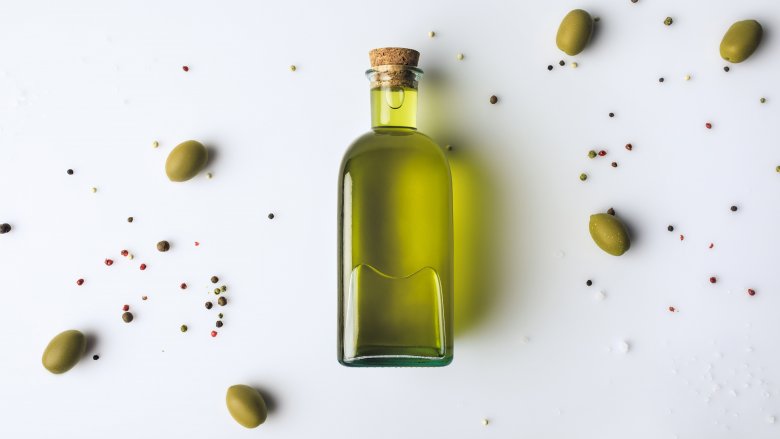How To Tell If Your Olive Oil Is Real
If you do any sort of regular cooking, there's a good chance you have some olive oil in your pantry. This wonderful nectar of the Greek gods is great for everything from using as a base for salad dressings to simply pouring into a dish for bread dipping. Unfortunately, it's possible that as much as 80 percent — though some experts feel this number is too high — of Italian olive oil is fake or purposely mislabeled as virgin or extra virgin (via Forbes). By doing your homework, though, you can hopefully avoid paying too much for a bogus bottle of impostor olive oil.
First things first, you'll want to check out the date on your olive oil, as the more reputable brands will print on the bottle when the olives were harvested (via UC Davis Olive Center). Aim for the most recent harvest date, and if you don't see any indicator of your bottle's olive harvest, then you may want to think about picking up another bottle. Epicurious also recommends that you look for the name of the farm where the olives came. If the brand calls out the estate by name on the label, that's a good sign.
If everything with your prospective bottle so far checks out, then take a look to see if it has a seal from a third-party, such as European Union's Protected Designation of Origin or the California Olive Oil Council. This should ensure the olive oil is up to snuff with the particular council's standards. While Australia and Chile might not be the first countries that come to mind when you think of great olive oil, they're both pretty strict about the production of their product and should be a safe buy. As far as picking an olive oil with a high price tag or pretty label — that doesn't always translate to a product worthy of your kitchen.
Getting all the fake and poorly made olive oil off the shelf isn't easy. Reuters reports that it's a billion dollar business for the Italian mafia, but with a little diligence, you can pick out the real deal olive oil on your next shopping trip.
